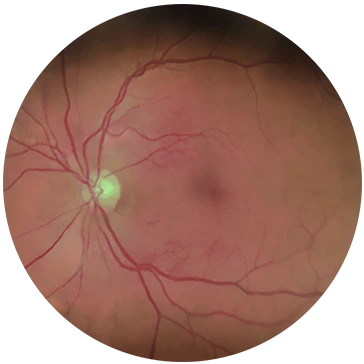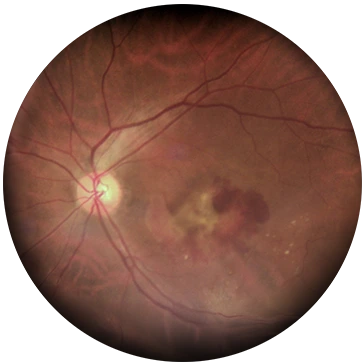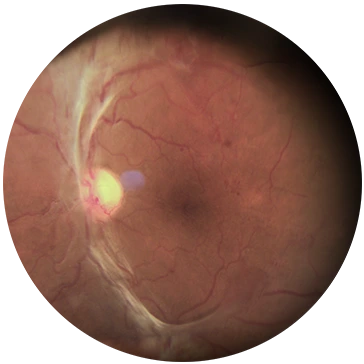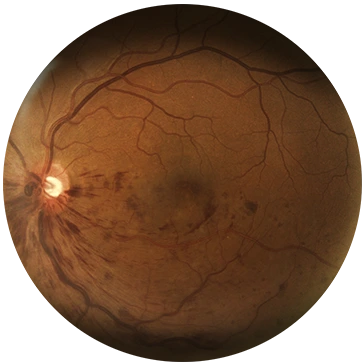
Daño en la retina
Indentificar cualquier daño en la retina de manera temprana es muy importante para evitar pérdida de visión
Así ve un paciente con daño en la retina avanzado
Arrastra la barra central para comparar el antes y después.


Antes
Después
- La retina es un tejido muy vulnerable a cambios en el cuerpo, en gran parte debido a que tiene vasos sanguíneos muy delgados que le proveen nutrientes y se pueden dañar.
- Factores como golpes, niveles altos de azúcar en la sangre o incremento en la presión sanguínea, pueden fácilmente producir daños que afecten la salud de los ojos.
- Algunas de las lesiones más comunes en retina incluyen:
– Exudados y hemorragias: Indican debilitamiento o ruptura de las paredes de los vasos sanguíneos
– Desprendimiento: Ocurre cuando la capa interna de la retina se separa de forma espontánea
– Oclusión venosa: Interrupción del flujo sanguíneo desde la retina por el bloqueo de una vena.

Síntomas
En etapas tempranas puede que las lesiones no presenten síntomas.
En medida que las lesiones avanzan puede presentar cualquiera de los siguientes:
- “Moscas flotantes”
- Visión borrosa en campo visual.
- Sombras o manchas.
- Mala visión nocturna o cambios repentinos de visión.

Factores de riesgo
- Edad avanzada.
- Obesidad.
- Diabetes o hipertensión.
- Tabaquismo.
- Golpes en el ojo.
- Exposición constante a rayos UV sin protección.
Evolución en la imagen de fondo de ojo
- Sano
- Hemorragia
- Desprendimiento
- Oclusión




Cambios en la visión del paciente
- Sano
- Hemorragia
- Desprendimiento
- Oclusión






